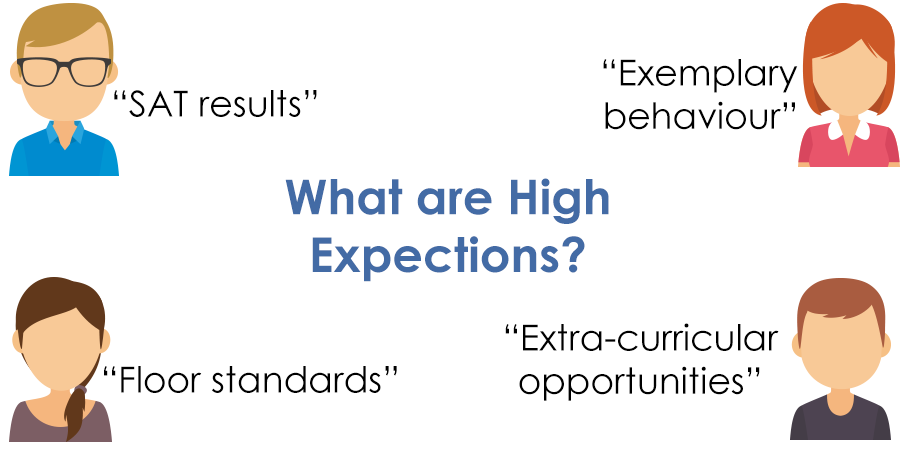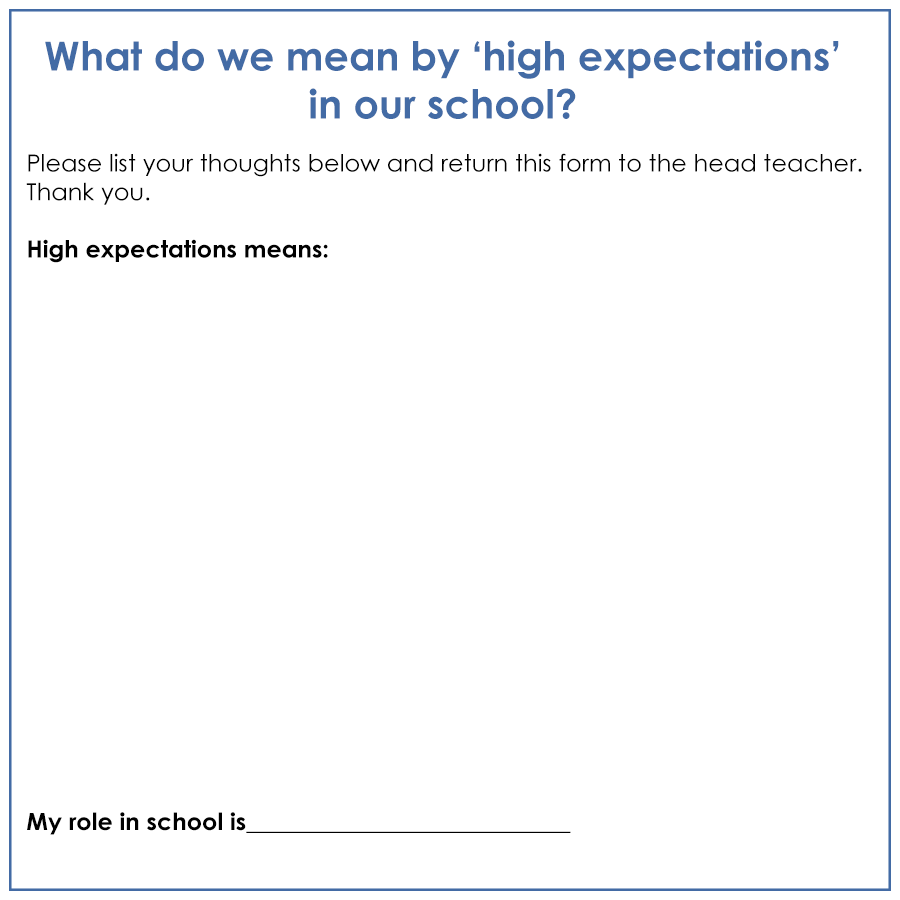This blog is an extract taken from Defining High Expectations in Your School by Tim Nelson. To find out more click here.

As you may expect, many schools use the phrase ‘high expectations’ in their mission statement, prospectus, website and other similar material when describing outcomes for their pupils.
When asked to define what this means, the typical responses are:
“Ensuring every child fulfils his or her potential.”
“Realising the talents of all.”
“Treating every child as an individual and ensuring their needs are met in full.”
“Everyone has the chance to shine.”
Whilst not wishing to criticise any of these statements, all of which are worthy aims, the difficulty can be that one sentence is neither expansive enough to cover the wealth of provision and outcomes, nor specific enough to be truly meaningful and measurable.
Consistency
Another common issue is that an agreed definition of ‘high expectations’ does not exist within a school. The head teacher may give one response, a deputy head teacher a different response and the chair of the governing body yet another differing response.










